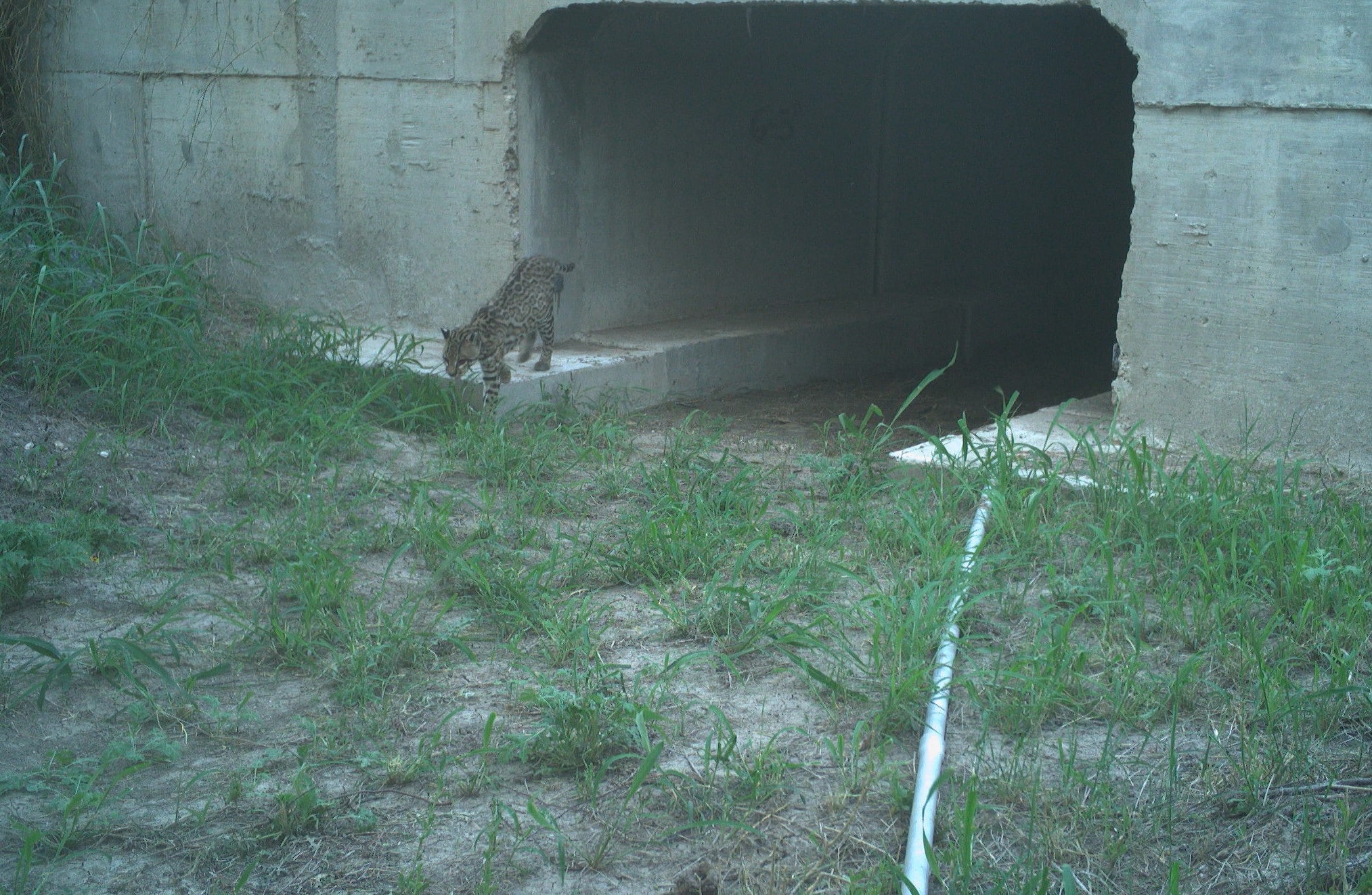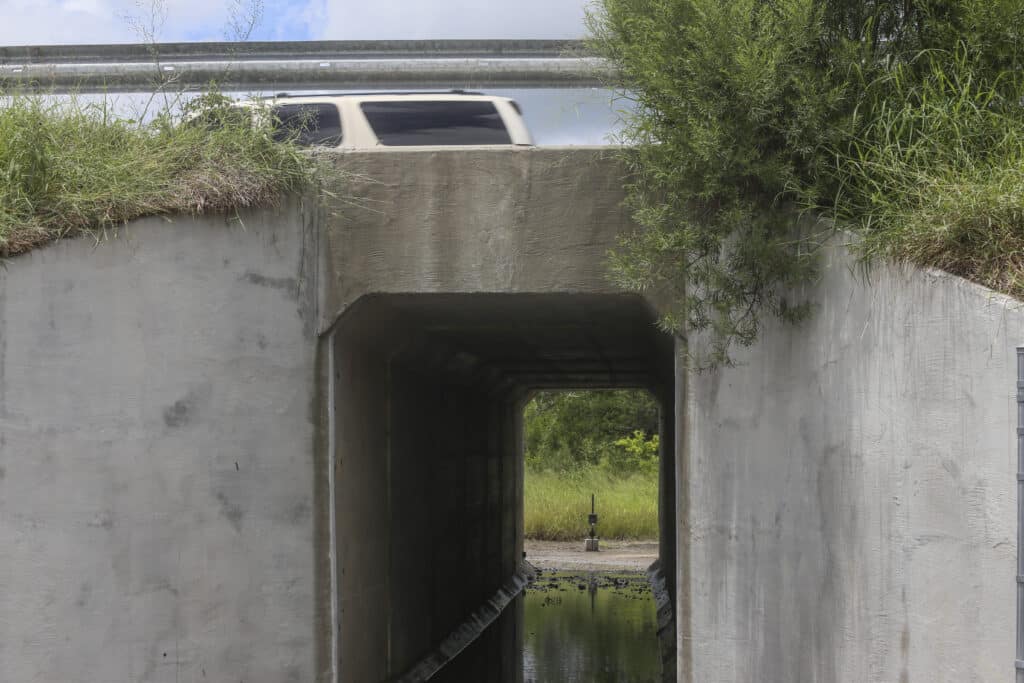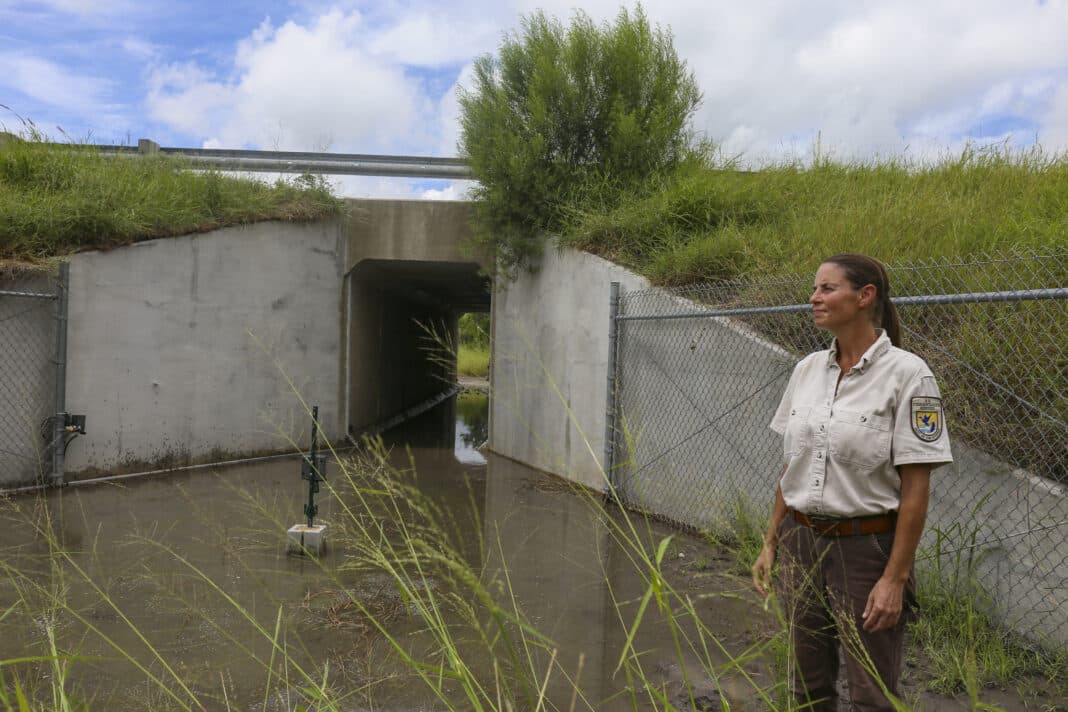The dappled cats which have captured the hearts of so many Texans continue to hold their own, often against the odds, in their South Texas strongholds.
At Laguna Atascosa National Wildlife Refuge, the ocelot population is steady at 17 individuals, with another 60 or so of the small wildcats roaming privately owned ranchland in Willacy and Kenedy counties.
The Texas ocelot subspecies retains its position on the critically endangered list, even though overall ocelot numbers from Mexico south to Argentina are relatively strong. The species is listed as being “of least concern” on the International Union for Conservation’s Red List of Threatened Species.
“Right now, it’s pretty exciting,” said Hilary Swarts, a wildlife biologist and ocelot expert with the U.S. Fish and Wildlife Service at Laguna. “We have an estimated 17 on the refuge, which is the highest number it’s been while I’ve been here. That said, from a population viability perspective, 10 and 17 are essentially the same number, as in too small.”
“It’s good to know they’re making ocelots, and we’re keeping our numbers up, which is a good sign, but obviously it’s still a small, threatened population … And, of course, the installation of the wildlife underpasses on 106 and 100 has been fantastic,” she added.
Overpasses working
More than a dozen concrete wildlife underpasses were installed by TxDOT on State Highway 100 and FM 106 to allow ocelots and other animal species safe passageways where they are less likely to be struck by vehicles.
The wildlife underpasses were incorporated into TxDOT planning during road construction and consist of four crossings on State Highway 100 and another nine on FM 106. The cost of the extra work, around $8 million, was a generous contribution by TxDOT from its discretionary fund.
“Two different ocelots use them on FM 106, so that’s exciting,” Swarts said.
And they seem to be helping.
Two adult males have been killed in vehicular incidents in the past two years. The first, an unknown male, died in an accident far from the underpasses in Kenedy County on Feb, 2, 2020; a second, known male, was killed by a vehicle in Cameron County on May 17 of this year.
These were the first detected ocelot vehicle mortality incidents since 2017.
Habitat limits

Ocelots are quite the generalists when it comes to prey items, hunting and eating birds, rodents, rabbits, amphibians, fish and even large insects when they find them.
But they are relentlessly picky when it comes to habitat selection. Unlike their cousin the bobcat, a common species in the Rio Grande Valley which occurs in even the largest cities in a wide swathe of different habitats, an ocelot likes a “roof” over its head.
“Basically with these guys I think it comes down to dense structure in the first meter and a half or two meters off the ground,” Swarts said, referring to known ocelot habitat from Texas to Brazil. “Whether that’s thorn scrub, whether that’s mangrove, whether that’s secondary rainforest growth, whatever it is, that seems to be a very constant theme throughout.”
A major effort to restore ocelot-friendly “roof” habitat of Tamaulipan thorn scrub has been occurring for the past several years at Laguna Atascosa and other refuge areas like La Sal del Rey in Hidalgo County.
“We’re still doing our best to work on land acquisition and habitat restoration,” Swarts said.
Genetic factor
Due to urbanization on both the U.S. and Mexican sides of the border along the Rio Grande over the past few decades, the Texas ocelot population has been cut off from the ocelots in Tamaulipas, creating concerns about a lack of genetic diversity in the Texas subspecies.
In fact, the Texas ocelots are concentrated into two separate enclaves, Laguna Atascosa in Cameron County and privately owned ranchlands in Willacy and Kenedy counties. These genetic islands even within Texas also heighten the focus on the ocelot’s long-term genetic viability.
So how many individual ocelots are needed to maintain a healthy population that isn’t susceptible to health problems associated with inbreeding?
That’s a million-dollar question.
“There are going to be so many variables,” Swarts said. “If you have 10 individuals with wildly different genetics versus a hundred individuals with the same genetics? I’m always real cagey about assigning numbers to things because they tend to get canonized or codified.”
Swarts referenced the case of northern elephant seals in the Pacific Ocean to illustrate the unknowns about healthy genetics in small mammalian populations. The seals were slaughtered in the hundreds of thousands during the 1800s for their blubber, which was refined into lamp oil.
The Mexican government ordered their protection in 1922, and the U.S. government followed a few years later, but by that time the damage was done and they were eventually believed to be extinct. Yet 50 to 100 animals were left, all found on Guadalupe Island in Baja California.
Since then, the northern elephant seal population has roared back to an estimated 160,000 individuals, all of whom are descendants of seals from the Guadalupe Island herd.
“They all have pretty much the same genetics, and they’re doing just fine,” Swarts said. “Then you have other populations where that wouldn’t fly. Minimum numbers? I don’t get into that much.”
Translocation

The success of the underpasses on the two highways near Laguna Atascosa on the refuge’s ocelot population has reinvigorated a years-long effort for the translocation of Mexican ocelots from Tamaulipas into the Texas population for breeding purposes.
Swarts believes the prospects of such an exchange, which would reinvigorate the genetics of the Texas ocelots, have been enhanced by the success of the underpasses in limiting ocelot vehicle mortality.
Translocation discussions, she said, were shelved until it was clear the TxDOT underpasses would actually be built, and whether or not they worked.
“The number one rule of conservation is until you address threats, you want to do everything you can to address threats at whatever level you can before you start introducing new individuals or doing anything dramatic,” Swarts said.
“So both from the biological perspective, that we are reducing risk of vehicle mortality, and to be transparent with the environmental agencies at the state and federal level in Mexico that we are serious about making sure that something like translocation would have the best possible chance for success … we put that on the back burner to get to the point where we felt like it was an even safer environment.”
Swarts says she hopes the success of the underpasses in limiting ocelot vehicle mortality will tilt the odds in favor of ocelot translocations from Mexico to Texas.
“It’s really a partnership, and really an enormous gift and favor that they do not owe us,” she said of Mexico.





